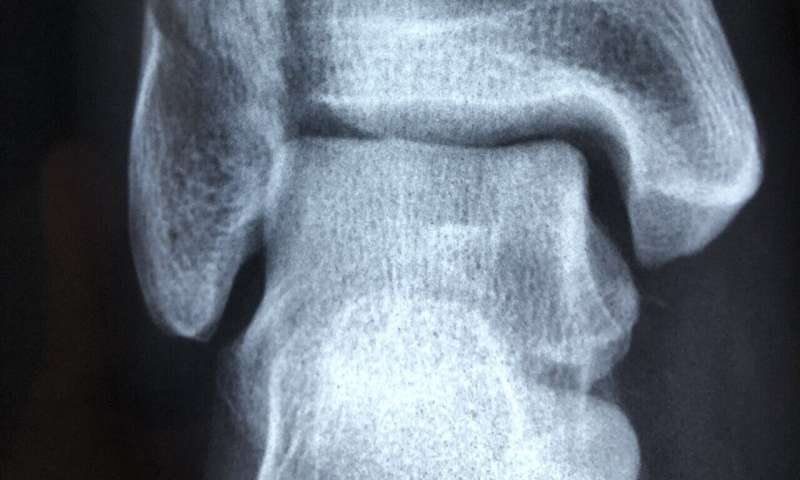
A new biocompatible polymer-based composite material could soon replace metal plates in treating difficult and unstable fractures. Developed at KTH Royal Institute of Technology in Stockholm, the newly-developed material is as strong as dental composites yet non-toxic.
The material and a surgical method, which were published in Advanced Functional Materials, will be used in clinical studies in 2023 and 2024, with a focus on hand fractures.
Michael Malkoch, professor of fiber and polymer technology at KTH, says that the material and method, AdhFix, will enable customized plating for fixation of fractures with a more comfortable, less complicated recovery. Collarbone and rib fractures in particular are ideally suited for the proposed treatment, since such injuries are not easy to stabilize.
Metal plates cannot be easily customized in shape, and they tend to adhere to soft tissue, resulting in debilitating complications, says Malkoch. For example, researchers in the U.S. have found that nearly 64 percent of finger fractures treated with metal plates result in mobility complications.
The alternative surgical method, AdhFix, combines screws with a build-up of the polymer/hydroxyapatite composite instead. The composite is shaped in situ before being rapidly cured on demand via high-energy visible-light-induced thiol-ene coupling chemistry.
Evaluations on human cadaver hands with proximal phalanx fractures show that AdhFix withstands the forces from finger flexing exercises. In models of in vivo femur fractures in rats, the methodology supported bone healing without degradation, adverse effects or soft-tissue adhesions.
“No fracture is the same as the other, this is one of the absolute advantages of the material,” says Malkoch. “A surgeon can tailor the fixation plate according to the patient’s bone shape and the structure of the fracture. The hospital also does not have to store metal plates.”
Source: Read Full Article
